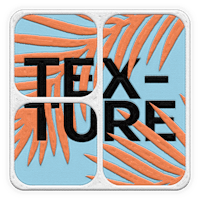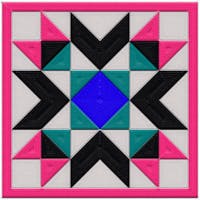Studio is Ceros's legacy platform designed to create, publish, and share interactive digital experiences. Flex is the next Ceros platform (currently under development) that improves upon Studio's content creation feature set, while introducing new abilities such as responsive design, text styles, and new types of interactions.
Comparing Studio and Flex
There are numerous differences between Studio and Flex, but the most fundamental are detailed in the sections below:
UI and Workspace:
Studio's user interface primarily consists of the Toolbar on the left-hand side and the Inspector Panel on the right. The Toolbar houses various tools and features used to create content, while the Inspector Panel includes three tabs (Design, Interact, and Animate) used to edit/adjust the content added to the canvas using the Toolbar, as well as add interactions and animations.
Flex is essentially compartmentalized into different modes (Design, Build, Preview), each designated for a specific process in the overall content creation flow. Flex has a Toolbar similar to Studio but doesn't have a stationary Inspector Panel. Instead, each mode in Flex (which users can toggle between) has its own dedicated UI elements specific to its use case. Flex's dynamic workspace simplifies the overall user experience.
Interactions and Animations:
In Studio, interactions and animations are categorized separately. Though the fundamental process of applying them in Studio is the same, they each have their own tab in Studio's Inspector Panel.
In Flex, interactions and animations have been consolidated into a single UX flow called Actions. Actions can be applied to objects on the canvas using Flex's Build mode. Additionally, Flex introduces new types of triggers for interactions and animations (Actions), such as "Scroll," to produce unique actions such as a true parallax scroll effect.
Note: Flex is currently in beta; the complete set of triggers and actions will be gradually added to the product as it develops.
It's important to note that Flex does not include Hotspots like Studio; instead, Actions must be applied directly to objects on the canvas.
Adaptive Layouts vs Responsive Design:
Studio does not allow for the creation of responsive layouts. Instead, Studio utilizes Adaptive Layouts, which involve creating individual variants for each major device type (desktop, tablet, and mobile). When a published experience is viewed on a specific device type, it will automatically switch to the corresponding layout variant. Variants can also be set for custom screen widths on desktop, but a refresh is required for the experience to update the displayed variant.
Each variant operates as a unique instance of the experience, meaning it needs to be organized and updated separately. Some content updates do sync across variants, but overall visual layouts and net new content (content added to the canvas after new variants were created) do not.
Flex does not utilize Adaptive Layouts like Studio. Instead, it allows for fully responsive designs. In Flex, you can set responsive variants with corresponding screen size breakpoints. When the browser window (regardless of the device type) hits a target breakpoint, the experience will automatically resize to fit in real-time.
Additionally, Flex utilizes features like content scaling, Flex groups, and canvas multi-view to streamline the responsive content creation process. Flex does not require manually updating separate layout variants like Studio does.
Text Styles:
Unlike Studio, Flex allows you to create a library of text styles (headers, subheaders, bodies, etc.) that can be automatically applied to any text box on the canvas. This new feature will increase efficiency when working on projects with large amounts of text. Text styles in Flex also have set values for responsive variants that can be adjusted in the Inspector Panel.
When to use Studio or Flex
As mentioned, Flex is a new and iterative product in active development (currently in beta testing). Its feature set will continue to expand and be refined based on rapid user testing and feedback. Until it is in its feature-complete state, there will be certain use cases for using Studio instead of Flex, and vice versa. Eventually, the feature gap between the two products will narrow and eventually close. But until then, listed below are uses for using Studio or Flex.
Use Studio (while Flex is still in development) when:
Creating security-enabled content
Importing existing design files or PDFs
Creating for team-wide usage between Creators and Editors
Using the Asset Library for scaled, branded content creation
Use Flex (in its current developmental state) when:
Creating responsive content
Designing for mobile-first viewership
Creating complex animation sequences, such as a parallax scroll effect
Creating scaled content with pre-built section templates and global text styles
Studio vs. Flex FAQs
Does Flex utilize Folders like Studio?
No, Flex does not utilize folders. Instead, it relies on groups and sections to organize content. Unlike Studio, groups in Flex have far more functional capabilities outside of just containing assets.
Can you publish and embed experiences in Flex like you can in Studio?
When the final version of Flex launches (currently in beta), it will allow for publishing and embedding while retaining its responsive design elements.
Can I open my Studio experiences in Flex?
Importing Studio experiences into Flex will be a feature included in the final version of Flex. Currently, that feature is not yet available in its beta build.
Does Flex utilize Object States like Studio?
The final version of Flex (currently in beta) will include an equivalent to Object States. However, the feature might not function exactly like Object States as they are in Studio, since Flex approaches interactions differently than Studio.
Will Flex templates be added to Ceros Inspire when it launches?
Yes, in time, Ceros Inspire will include high quality templates designed specifically for Flex.


















